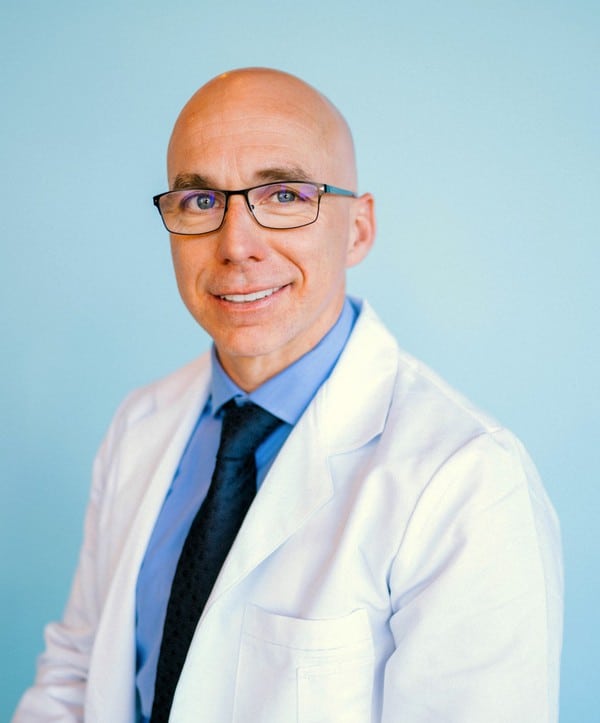
It can be hard to know what you should do when your healthcare company encounters legal troubles. For the most part, the intricacies of healthcare law are not something that most people have in-depth knowledge about, so it may seem easy to let a general practice lawyer handle everything. However, perhaps surprisingly for some, this is one area where lawyers with professional medical expertise and background can provide more value.
Dr. Benjamin Dyches, a dentist turned lawyer with a unique perspective on law, shared his expertise on research and development (R&D) tax credits.
From Dentist to Attorney
Dr. Dyches earned his Doctor of Dental Surgery from the Case Western Reserve Dental School and went on to open a general dental practice in Colorado and later in Washington. He practiced dentistry for about 12 years and built up a group of practices he sold to a dental service organization.
“The relationship after the sale was not quite as easy or fluid as it was beforehand. We had a falling-out-from-a-business perspective that led to a number of interesting legal questions. I had a good team of attorneys that were representing me. They did not, however, really know healthcare law, or how some of the questions that were being asked might impact the healthcare professional’s ability to build another practice or growth,” Dr. Dyches said.
After these experiences, he realized that his heart was in the law part of the job rather than dentistry itself.
“I wanted to help other healthcare professionals have a much easier process in these legal aspects. I wanted to make sure that there is legal representation out there that understands what it’s like to be a clinician, what the legal options are and how these options might impact your practice,” he explained.
This change of direction guided him to law school, graduating from J. Reuben Clark Law School at Brigham Young University with a focus on business law, healthcare law and alternative dispute resolution.
“I learned a lot in law school, especially about how things should be going for doctors,” Dr. Dyches said.
Through his legal expertise, Dr. Dyches represented doctors at all levels, from the courtroom and state boards to just the flow of contract work regarding mergers and acquisitions of practices and specialized tax questions and consulting, especially for R&D tax credits.
What Is the R&D Tax Credit?
According to Dr. Dyches, the R&D tax credit is one of the most powerful tools for growth in healthcare companies. The federal R&D tax credit (also known as the Research and Experimentation [R&E] tax credit) was first introduced in 1981, and became a permanent part of the tax code in 2015 through the Protecting Americans from Tax Hikes Act of 2015 (the PATH Act). It was established and expanded to recognize innovation in US businesses.
“The tax credit is recognized when you bring in a new business technique or a new product, where you can receive an offset on the qualifying expenses against your taxes, reducing the amount of taxes that you owe,” Dr. Dyches explained.
What Are the Qualifications for R&D Tax Credit?
There are substantial precedents and several thresholds that the Internal Revenue Service (IRS) uses to identify what’s a qualifying activity and what’s not. Still, Dr. Dyches emphasized that one doesn’t have to establish a new piece of research or knowledge to qualify for the R&D tax credit.
For example, if you are an orthodontist, you don’t have to create something new to orthodontics to qualify. What you have to do is bring some innovative technology—something that’s new to your practice (at the practice level).
“There are a lot of doctors out there who go into Continuing Medical Education (CME) classes to learn a new technique, evaluate a new product, or invest in innovation. But they’re also looking at this with questions: ‘How do I reduce my negative outcomes?’ ‘How do I improve my patient care?’ ‘Let me try and bring X into my practice.’ So, in essence, they’re setting up these internal clinical trials where they can discover what the real outcomes look like in practice. We help identify which of these activities qualify for the R&D tax credit,” Dr. Dyches said.
R&D Tax Credit Calculations: How Much Can I Get?
Dr. Dyches’ team at Dr. Tax Credit helps put together the extensive paperwork and calculations to support the R&D tax credit. They have worked with all kinds of doctors and identified that one of the biggest qualifiers is the need to own a practice.
“We see credits that can be anywhere from $8,000 up to $80,000 or more depending on the practice and the size of the practice and exactly what they do,” Dr. Dyches added.
A few of Dr. Dyches’ clients call the R&D tax credit “free money,” but he says he doesn’t see it that way because this is money they’ve already earned.
“It’s not free. You’re just getting a credit that you’ve already earned,” Dr. Dyches explained.
R&D Tax Credit: A Powerful Tool to Maximize
Dr. Dyches suggests that if a healthcare company or doctor is interested in learning about and qualifying for the R&D tax credit, they should make sure their consultant understands what’s involved and help them take advantage of this powerful tool. Identifying internal clinical trials, new business techniques, the qualifying activity, and consulting a qualified attorney can help make this process straightforward.
Taking the Step to Innovation
The journey from dentist to lawyer may not be an easy one, but Dr. Dyches has found his way in healthcare law and helping doctors and companies resolve legal troubles. His expertise in the R&D tax credit has helped many companies and doctors grow and thrive. He has seen firsthand the impact that innovation and new techniques can have on healthcare companies or doctors who want to take advantage of the R&D tax credit.
Dr. Dyches encourages us to think of the R&D tax credit as a tool that can help boost revenue and profits for any healthcare business or doctor looking to move forward, whether it’s taking on more patients, acquiring another practice or buying an additional office building.
“You ask any successful person about their secret for success, and they’ll tell you it was all the things they learned along the way that made them successful. And I think that’s what makes this credit so powerful—it rewards people who are willing to take risks and learn new things because through learning these new techniques, we’re moving our industry forward,” Dr. Dyches said.





0 Comments